For tram and bus passengers in Melbourne there’s no way to purchase a ticket onboard the vehicle – random retail outlets are the only place where you can purchase a Myki so that you can travel. So how much does Public Transport Victoria pay these retailers for providing this service?
Well, they get given some posters to put in their front window.
Boxes of Myki cards – in full fare, concession and seniors flavours.
And the most important thing – a Psion Teklogix Workabout Pro handheld computer running custom Myki software, to process Myki card sale and topups.
And a quarterly payment of $260.00, along with a card issuing payment of $0.50, and a 4% commission on every topup.
So what do retailers think?
Back in 2008 the Herald Sun covered the reaction of newsagents to the new ticketing system, and the change in commission structure compared to the previous Metcard tickets.
The Victorian Authorised Newsagents Association says the Transport Ticketing Authority is offering just 12c commission on a transaction for the new myki card.
Under the existing Metcard arrangement newsagents receive a 5 per cent commission.
Clayton Newsagency owner Simon Richards, a third-generation newsagent, said he told the TTA he would not be selling the ticket, despite his long history selling Metcard.
“I won’t be taking up their offer,” Mr Richards said.
“They are just making it economically unviable.”
Mr Richards said newsagents would lose money on the transactions if customers used debit or credit cards, which cost the retailers a fee every time they were processed.
“We get 12c a transaction, but if someone produces an Amex card, which is 3 per cent (fee), then it’s just unviable.”
A copy of the myki outlet fee schedule, seen by the Herald Sun, shows that retailers who sell a new myki will get 50c, while processing a top-up on the smartcard will generate a 12c commission.
As well, a service fee of $260 will be paid to the agents four times a year.
Opposition transport spokesman Terry Mulder said the Government had slashed newsagent commissions by up to 65 per cent.
With independent newsagents also unhappy the government favoured 7-Eleven as their favoured Myki retail outlet.
Myki is a dog of a system. The previous government allowed it to provide 7-Eleven with an advantage over newsagents by agreeing to integration with their in-house systems. This was promised for newsagents, after my lobbying, and then dropped. So much for the Government back then supporting small business. If scrapping Myki pulls this back then it’s a good thing.
But they don’t seem worried if the upcoming changes to Myki see newsagents cut out altogether.
From a retailer perspective, the minuscule commission from MYKI card top-ups does not cover the actual costs of providing the service and the dealing with myriad customer queries. But plenty continue to offer it, including me in one of my shops.
There is no upside in services, especially minuscule commission services – these are best handled throng convenience stores. But … as with anything I write about here, what you do in your business is up to you.
For the one shop I have that offers MYKI top-ups, we will continue until the government decides otherwise. We don’t rely on it. It’s not core. But, it is a customer service that is appreciated locally … and for that we are grateful.
Footnote: fee schedule
Here is a full fee schedule dating back to the introduction of Myki in the late-2000s.
MYKI OUTLET FEES SCHEDULE
This Fees Schedule applies for the purposes of the myki Outlet Agreement and supersedes any previous Fees Schedule
1. Customer service payment
A quarterly payment of $260.00, paid for your satisfactory performance of operational and customer service obligations. The payment is payable each quarter in arrears. If you fail to meet the required service obligations, payment may be partially or fully withheld or forfeited
2. Top up of myki with money or myki pass
Each time a myki is loaded with product or topped the up with value at the myki Outlet, you will receive payment of four per cent (4%) of the published price of the product or value of the top up
3. Card issuing
For each new myki you issue you will receive a card issuing payment of $0.50. This amount is payable in addition to the initial top up. Thus, if a customer buys a new myki and loads initial value or product onto the myki at the same time, you will be paid $0.50 for issuing the card plus 4% for the initial top up. The initial top up does not include the
card fee payable by the customer.4. myki merchant service fee (MSF)
The MSF is payable by you to TTA if myki is used to purchase goods at your store. The use of myki as payment for goods and services is a service that must first be approved by TTA, as it will be subject to Government approval. The MSF is 2.5% of the value of the purchase.
5. GST
All amounts are inclusive of GST.
5. EFTPOS and credit cards
If the myki Outlet has EFTPOS or credit card facilities, these should be available for customers who wish to buy myki cards and add product or value. It is preferred if these facilities are provided at no extra charge to customers. This does not prevent the myki Outlet from applying its normal minimum EFTPOS or credit card limits.
Note the mention of “use of myki as payment for goods and services” – the original plans for the “New Ticketing Solution” intended that the smartcard would be able to be used for more than just transport payments.
One example is Hong Kong’s Octopus card, which is accepted at vending machine, parking meters, and retail outlets.
However the Myki rollout took so long that by the time it finally went live, contactless payment was now a standard feature of credit cards, leading to it being dropped from the scope like so much else.
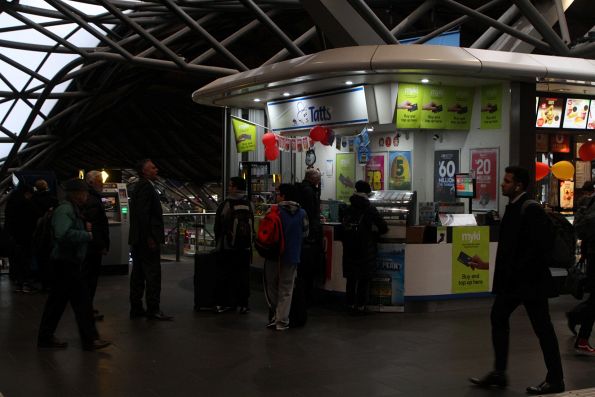
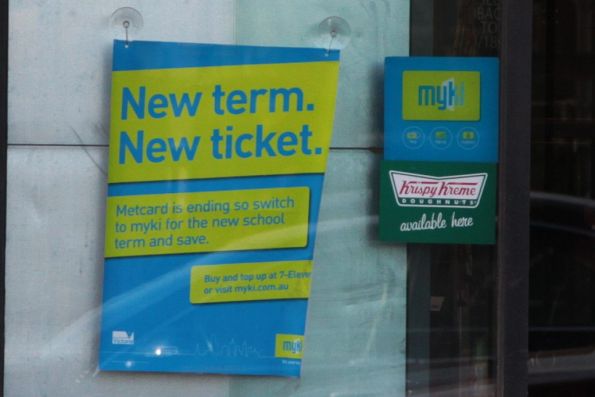
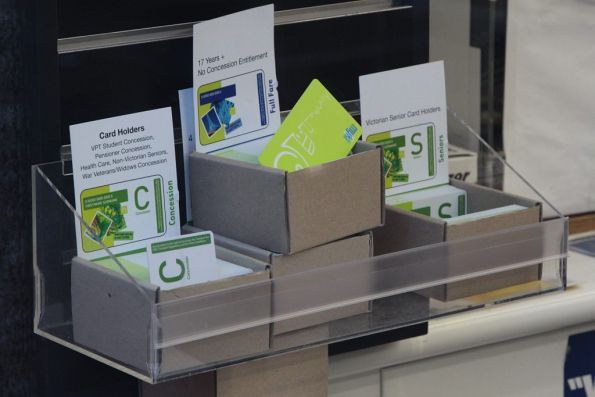
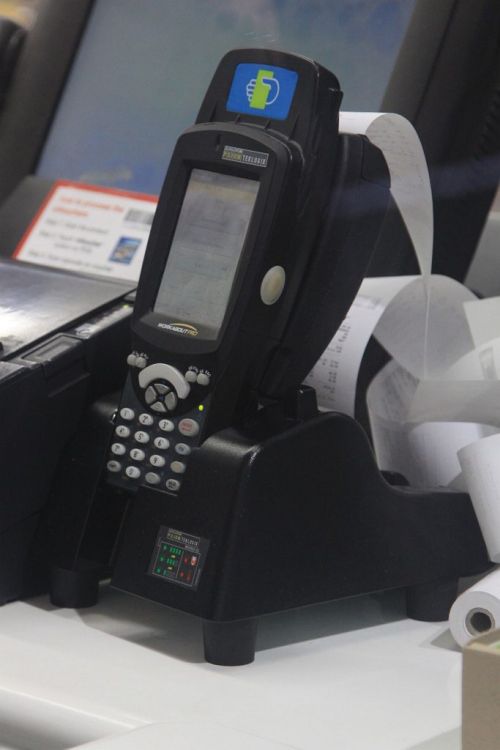
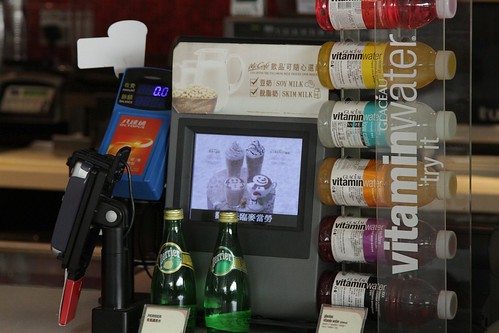

I think a very common feature in Australia is that these systems are never designed with the consumer/customer/passenger as the number 1 priority. Nor for interstate or overseas visitors. If I didn’t have a serviced railway station within walking distance of my home I wouldn’t have a clue where to buy a Myki card.
The Octopus Card in HK is a perfect example of customer first. You can buy one on arrival at the airport, and when you leave you can get a refund on what’s left (less a small service fee). Works in many places – even the little ferries down at Aberdeen.
Haven’t been to Singapore for a long time, but last time my host’s e-tag worked at shopping centre parks as well as on toll roads.
We are really backward here.
Opel in Sydney can use a regular credit card, they even let you through the gates in case of “missing touch on”. It is only Melbourne that wishes to be actively hostile toward public transport users.
This post also touches on another issue. Payment processors charging like a wounded bull. The “fintech” are even worse than the banks, Square charges a whopping 1.9%. Might as well be a tax.